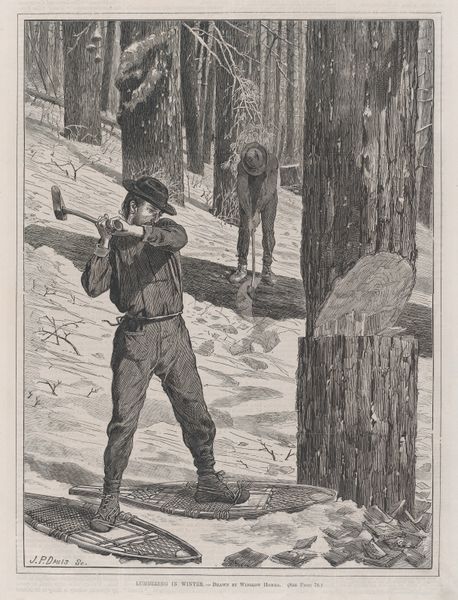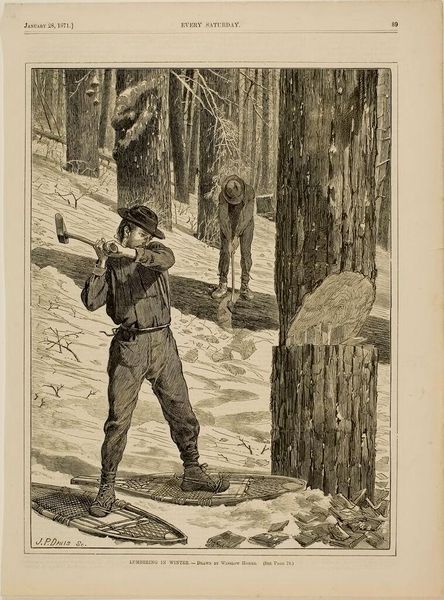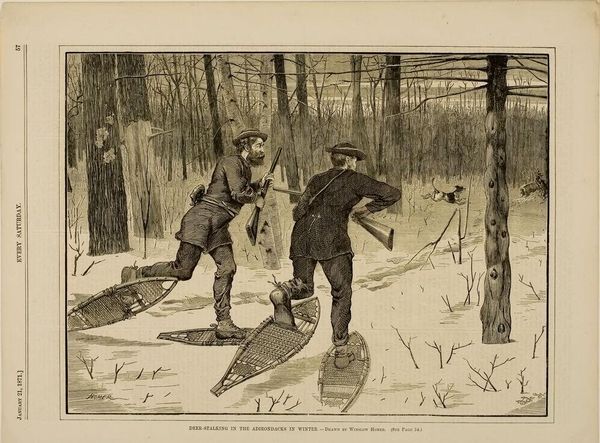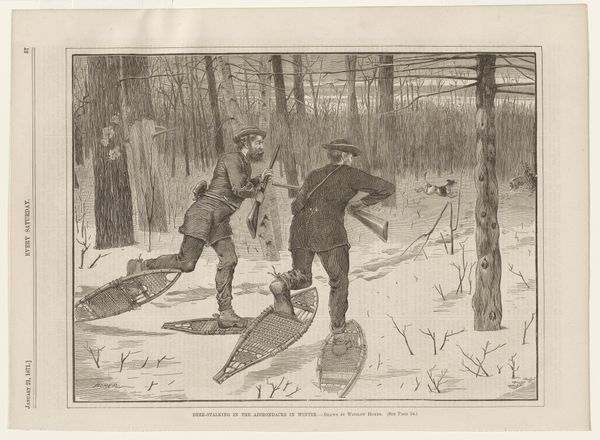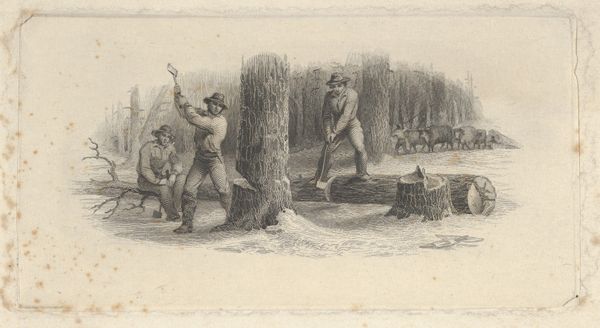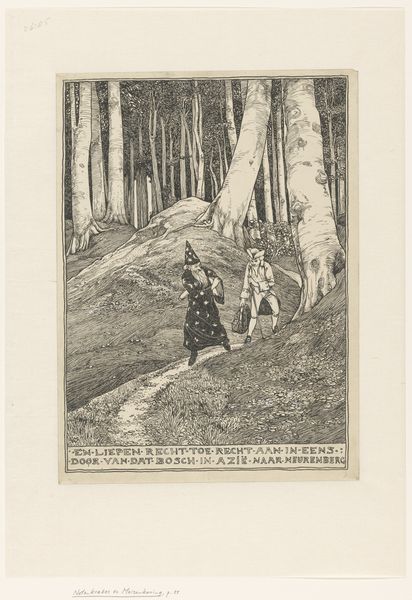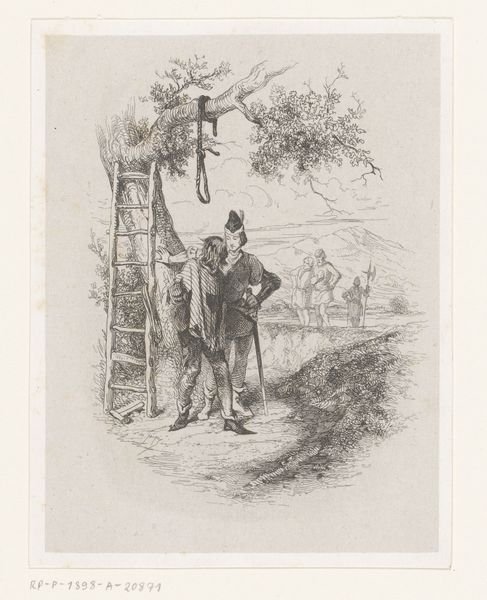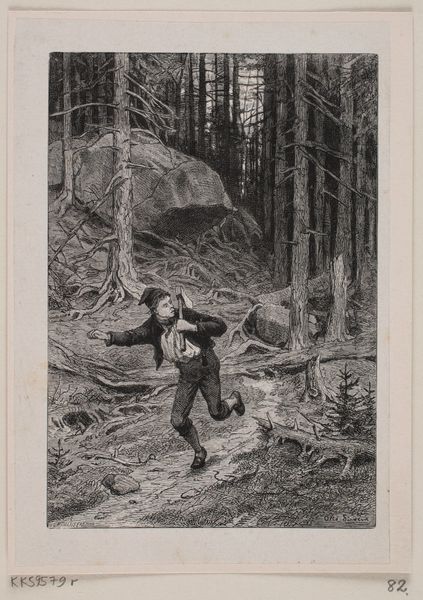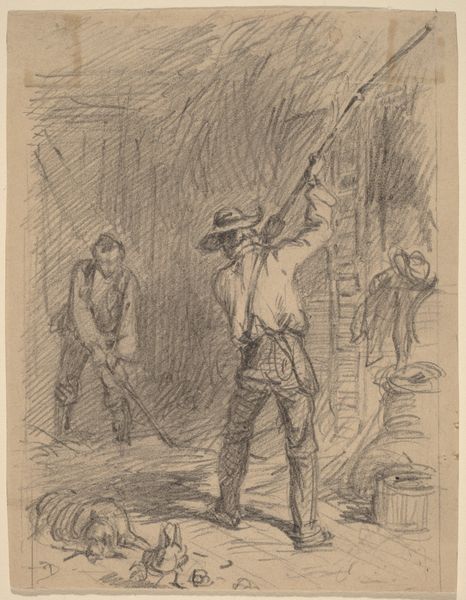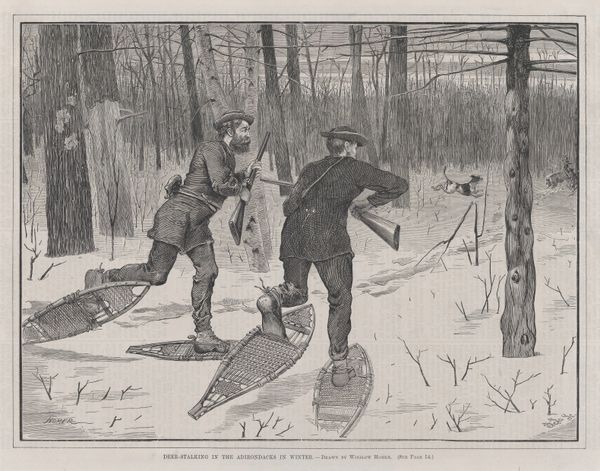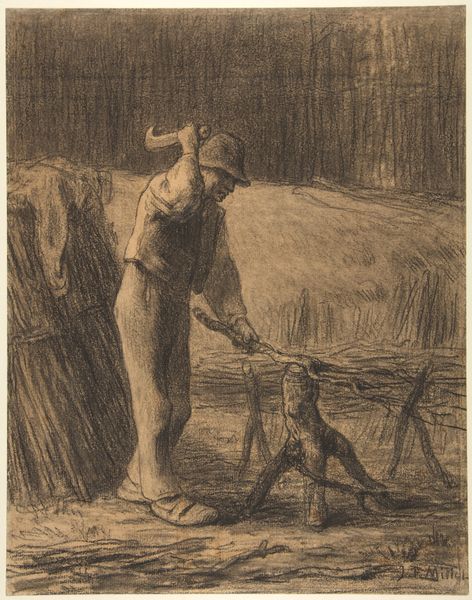
print, woodcut, wood-engraving, engraving
# print
#
landscape
#
woodcut
#
united-states
#
genre-painting
#
wood-engraving
#
engraving
#
realism
Dimensions: 11 3/4 x 8 3/4 in. (29.85 x 22.23 cm) (image)14 1/8 x 10 13/16 in. (35.88 x 27.46 cm) (sheet)
Copyright: Public Domain
Curator: Before us hangs "Lumbering in Winter," a wood engraving from 1871 by Winslow Homer, printed in "Every Saturday." The print portrays two men in a snowy forest, engaged in the arduous task of felling trees. Editor: It strikes me as a bleak depiction. The monochromatic palette and sparse composition—stark vertical tree trunks dominating the space—evoke a sense of isolation and the harsh realities of winter labor. Curator: Indeed. It speaks to the changing socio-economic landscape of post-Civil War America. We see the romantic vision of rural life giving way to the industrial demands of the era. Consider how illustrated periodicals like "Every Saturday" disseminated such images, shaping public perception of work and the environment. Editor: I'm drawn to the contrast in textures. The smooth snow against the rough bark of the trees, the delicate lines defining the figures against the dense background. It's an interplay that creates depth and a rather melancholic rhythm. Curator: Homer, early in his career, often depicted scenes of everyday life. Here, he confronts the complex relationship between humans and nature. Lumbering, essential for economic growth, came at the expense of environmental degradation. It is an undercurrent throughout the image. Editor: It also suggests a psychological narrative, though a subtle one. The lumberjack in the foreground with his ax raised appears ready for hard work, while the figure in the background has an almost spectral presence, bending under the weight of labor. I find that asymmetry visually compelling. Curator: It is these details, published widely, that fostered awareness, albeit gradual, about deforestation and the working conditions of laborers, a commentary often absent from idealized landscapes. Editor: Viewing it today, I recognize that the artist achieves a powerful graphic quality with limited tonal range. The figures are almost silhouetted which adds to the drama. I will walk away reflecting on man versus nature, that much is certain. Curator: Exactly. The work, while seemingly straightforward, quietly documents this tension and its integration into American culture and the environmental impact we continue to deal with.
Comments
No comments
Be the first to comment and join the conversation on the ultimate creative platform.
